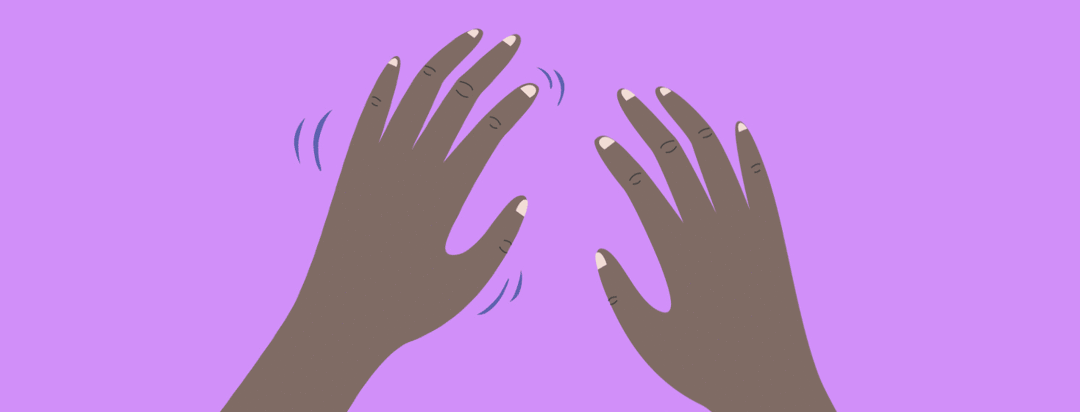Shaking in a New Symptom
You might remember Mariah Carey's song about moving on from a failed relationship. She soulfully sang that she was striving to "Shake, shake, shake, shake, shake it off..." And there was the disco hit from KC and the Sunshine Band singing "Shake shake shake, shake shake shake...shake your booty..." in efforts to encourage people to get up and dance. There is also the popular idiom - 'Shake it (something or someone) up' - which refers to changing something in a drastic manner.
And now, there's a new 'shake' that some may know and now I do too. It's nothing to do with a catchy beat in a song about a (failed) love, having fun dancing, or a phrase or expression that has a figurative meaning attached to the phrase. As for me, the shakes in my life are the newest symptom in my MS chronicles.
Entering the world of MS tremors
I'm sitting and doing nothing in particular when I feel my right arm twitching. I look and it stops. We play this 'game' a few times until I can't miss it. My arm is actually moving. I bring my daughter's attention to it and with widened eyes, she asks, "you're not doing that?" And even now, incidentally, as I am typing, I am freshly back from a break while I watched my fingers and hand shake about.
My legs are the newest body part that's joined in this latest symptom. One day I was sitting and my leg just began shaking in quick, rhythmic movements in a way that I couldn't have done on my own if I'd wanted to. It begins so quickly that sometimes I don't even realize it's happening until someone draws my attention to it. After discussing with my doctor and my own research, I learned about this symptom that has 'shaken' its way into my life. They are called MS tremors.
What is the cause?
Tremors from MS are when a body part moves, jerks, twitches, or shakes and you can’t control it. I've read that many people with MS can have some form of tremor in different parts of their bodies, such as their head, arms, or legs. MS tremors result from damage to a part of the brain called the cerebellum which controls our balance and coordination and smooths out the actions made when moving limbs, eyes or when speaking.1
Types of MS tremors
There are four different kinds:1
- Intention tremors: There’s no shaking when you’re at rest. It begins when you try to reach or grasp something or move your hand or foot to a precise spot. Actually, this is the most common form of MS tremor and it usually causes the most problems in day-to-day life.
- Postural tremors: You shake when you sit or stand, but not when you lie down.
- Resting tremors: Cause movement more when you’re sitting still and less when you move. (This type is more common with Parkinson’s disease than MS).
- Nystagmus tremors: Cause jumpy eye movements.
MS tremors can be mild to severe to disabling. At this juncture, and prayerfully moving forward, mine are mild.
Managing tremors
There's no cure or medications for tremors at this time, however, therapy can help. For example, physical therapy can show you exercises that increase range of motion, improve posture and balance making the body more stable. Occupational therapy can help determine adaptive or assistive devices that can help grab things from up high or off the floor, pull up a zipper, or hold a fork more easily.
At any rate, although yet another symptom has 'shaken' it's way into my MS journey, I will do as Barbara Kingsolver (American novelist, essayist and poet) encouraged when she said "Relax your shoulders, shake your head and spine like a dog shaking off the cold water. Tell that imperious voice in your head to be still."
Editor’s Note: We are extremely saddened to say that on December 2nd, 2024, Dianne Scott passed away. Dianne’s advocacy efforts and writing continue to reach many. She will be deeply missed.

Join the conversation